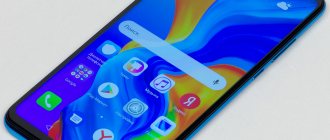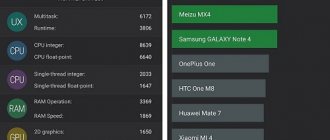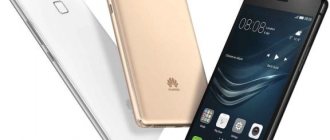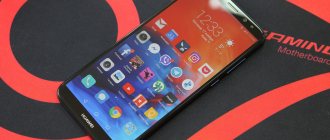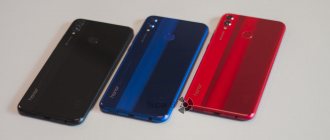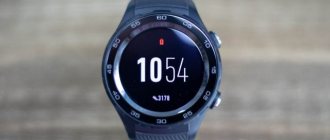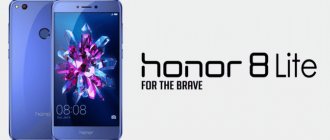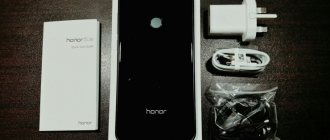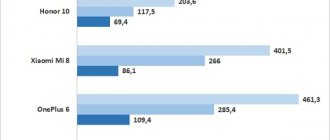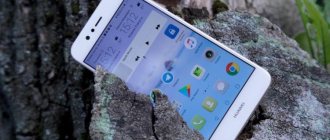Huawei's Mate 10 Lite was one of the most interesting mid-range phones last year. Unfortunately, there were several significant shortcomings that hindered its popularity. I recently tested its successor, the Huawei Mate 20 Lite, to find out whether the manufacturer has fixed the shortcomings of the previous version and whether it is worth buying.
Huawei Mate 20 Lite on AliExpress
Specifications Huawei Mate 20 Lite
The Huawei Mate 20 Lite has been improved - this is indicated in the specifications. The display is made using IPS LCD technology and has a diagonal of 6.3 inches. Its resolution is 1080x2340 with a density of 409PPI, and the ratio is 19.5:9.
The HiSilicon Kirin 710 processor (8 cores with a maximum frequency of 2.2 GHz) is responsible for efficient operation. With it, the Mate 20 Lite offers the Mali-G41 MP4 graphics chip. The model I'm testing has 4GB of RAM and 64GB of internal storage, with storage expandable via MicroSD cards up to a maximum capacity of 256GB.
Photos are taken by a dual main camera of 20 MP (f/1.8) + 2 MP with LED, and the front module consists of 24 MP (f/2.0) + 2 MP lenses. Connectivity and communication are supported by dual-band Wi-Fi 802.11 a/b/g/n/ac, LTE, Bluetooth 4.2, NFC and GPS with A-GPS, GLONASS as well as BDS.
The Mate 20 Lite smartphone from Huawei also offers USB-C and 3.5 mm connectors. The battery here has a capacity of 3750 mAh and supports fast charging. The device runs Android 8.1 Oreo OS with EMUI 8.2 shell. The size of the gadget is 158.3 x 75.3 x 7.6 mm and weighs 172 grams.
Detailed technical specifications
Make and model
Make and model of the device, and alternative names (if any).
| Brand Device manufacturer company. | Huawei |
| Model Device name. | Mate 20 Lite |
| Alternative names Other model names, if available. Sometimes the model is called differently, depending on the country or because of popular nicknames. | SNE-LX1 SNE-LX2 SNE-LX3 |
Design
Appearance of the device including dimensions, weight, volume, colors and materials.
| Width The horizontal side of the device when used in standard orientation. | 75.3 mm (millimeters) |
| Height The vertical side of the device when used in standard orientation. | 158.3 mm (millimeters) |
| Thickness The cross-sectional size of the device. | 7.6 mm (millimeters) |
| Weight How much does the device weigh excluding the case, SIM and memory cards and other additional elements. | 172 g (grams) |
| Volume Approximate value calculated using the formula: length times width times height. | 90.59 cm³ (cubic centimeters) |
| Colors What colors is the device available in? | Black Golden Blue |
| Housing materials What materials is the body made of? | Aluminum alloy Polycarbonate |
System on a Chip (SoC)
A system on a chip, a single-chip system (System on a Chip, SoC) is when several systems performing different device functions are connected on one chip.
| System on a Chip (SoC) A single-chip system that contains components such as a processor, graphics accelerator, memory units, communication interfaces, etc., as well as software for the operation of the system. | Huawei HiSilicon KIRIN 710 |
Central processing unit (CPU)
| Central processing unit (CPU) The main component of the device is responsible for calculations and data processing. | 4x 2.2 GHz ARM Cortex-A73, 4x 1.7 GHz ARM Cortex-A53 |
| Technical process What technological process is used to make the chip? The smaller the process technology, the better - the chips consume less power and generate less heat. | 12 nm (nanometers) |
| Processor size Processor capacity is a parameter that indicates how many bits of data a processor register processes in 1 clock cycle. This is usually 32 or 64 bits. | 64 bit |
| Instruction Set Architecture Instruction set architecture (ISA) is a programmable part of the microprocessor core used by software to control the operation of the processor. | ARMv8-A |
| Number of processor cores The processor can be either single-core or multi-core. The performance of the processor depends on the number of cores (threads). The more cores working simultaneously, the higher the power consumption, so in mobile devices all cores are used only under high load. | 8 |
| CPU clock speed Clock speed is the number of operations per second that a processor or its core can achieve. The higher the frequency, the higher the overall performance of the device, but performance also depends on the processor architecture and the number of cores. | 2200 MHz (megahertz) |
Graphics Processing Unit (GPU)
| Graphics Processing Unit (GPU) The graphics processing unit (GPU) is used to process and display graphics - 3D effects, games, interfaces and other visual elements. Due to the pipeline architecture, the GPU is many times more efficient in graphics processing than the processor. | ARM Mali-G51 MP4 |
| Number of GPU cores Similar to a processor, a GPU can have one core or several. The number of cores (threads) determines the performance and amount of information processed. The more cores, the better. | 4 |
| GPU clock speed Clock speed is the number of operations per second that the GPU or its core is capable of achieving. The higher the frequency, the higher the speed of the processor, and therefore the number of tasks it can solve. | 1000 MHz (megahertz) |
Random access memory (RAM)
| Amount of random access memory (RAM) RAM (Random Access Memory, RAM, RAM) is temporary memory (works only while the device is running), which stores data and code for the operational operation of programs and applications. The more RAM, the more programs you can run simultaneously without loss of performance (there will be fewer “brakes”). | 4 GB (gigabytes) —- i7 coprocessor GPU Turbo |
Built-in memory
Most mobile devices have built-in Flash memory, which is used as a storage for system data, the operating system, as well as user data - photos, videos, recordings and much more.
| Built-in memory capacity The higher the amount of built-in memory, the more games, programs, music, videos and your other files will fit in the device, especially the amount of memory is important when the device does not support memory cards. | 64 GB (gigabytes) |
Operating system
A mobile operating system (OS) is pre-installed software with a well-thought-out interface for user control of device functions.
| Operating system (OS) The operating system installed by default by the device manufacturer, as well as its version. | Android 8.1 Oreo Android 9.0 Pie Android 10 |
| User interface User interface (UI - user interface) is usually a graphical shell that ensures the transfer of information between the user and the operating system. | EMUI 8.2 EMUI 9.0 EMUI 10 |
Battery
To operate autonomously, a mobile device requires a battery that powers all its components.
| Battery capacity The main characteristic of a battery is its maximum capacity, that is, the charge it can store. Capacity is measured in mAh (mAh, milliamp-hour). The higher the capacity, the longer the mobile device can work. | 3750 mAh (milliamp-hours) |
| Battery type Many types of batteries have been used in portable devices, but NiCd (nickel-cadmium), NiMH (nickel-metal hydride), and even more so SLA (lead-acid) batteries are already considered obsolete. Instead, modern mobile devices use Li-Ion (lithium-ion) and Li-Pol, Li-Poly (lithium-polymer) batteries. | Li-polymer |
| Power adapter Characteristics of the charger (adapter, power supply) included in the standard package of the mobile device. More precisely, the output voltage in volts (V) and the output current in amperes (A). | 5 V (volts) / 2 A (amps) 9 V (volts) / 2 A (amps) |
| Fast charging Fast charging is when the device charges very quickly. For example, up to 50-70% of a full battery charge in ten minutes. | Yes |
Screen
The screen (display) is the main element for displaying graphic information.
| Technology The technology used to make the screen. There are many types of display manufacturing with their pros and cons. | IPS |
| Diagonal The screen diagonal of a device is measured in inches (inch, in or simply ″), and 1″ is equal to 2.54 cm. | 6.3 in (inches) 160.02 mm (millimeters) 16 cm (centimeters) |
| Width Approximate screen width | 67.06 mm (millimeters) 6.71 cm (centimeters) |
| Height Approximate screen height | 145.29 mm (millimeters) 14.53 cm (centimeters) |
| Aspect Ratio Aspect ratio is the ratio of the shorter side of the screen, which is considered to be 1, to the longer side, which is denoted by a decimal fraction indicating the ratio to the short side. | 2.167:1 |
| Screen resolution Screen resolution is the number of horizontal pixels (dots) multiplied by the number of vertical pixels. The higher the resolution, the more detailed the image will be. | 1080 x 2340 pixels |
| Pixel Density The number of pixels per inch or PPI (pixels per inch) indicates the density of pixels per 1 inch (2.54 cm) of the screen. The higher the PPI, the sharper the image, and the less visible or even invisible “squares and dots” (pixels). | 409 ppi (pixels per inch) 160 ppcm (pixels per centimeter) |
| Color depth Color depth means how many bits are used in 1 pixel to display color (bits per pixel). | 24 bit 16777216 colors |
| Screen area Approximate usable area occupied by the screen on the front of the device. The higher the percentage, the narrower the frames around the display or the smaller the “chin with bangs.” | 82% (percent) |
| Touch screen A touch screen is a device that usually covers the display and is a touch input tool. In fact, in mobile devices, the touchscreen is a replacement for the keyboard and mouse. | Yes |
| Touch screen type There are many types of touch screens, with their pros and cons. Mobile devices often use capacitive touchscreens, but technology does not stand still and new types of sensors are appearing. | Capacitive |
| Multi-touch Touch screen support for two or more touches. For example, zooming photos with two fingers. | Yes |
| 2.5D screen 2.5D is a display with rounded edges. Device manufacturers use a 2.5D screen as a design element, for a pleasant tactile sensation, or to add durability, dust and moisture protection. | Yes |
Main camera
The main camera, usually built into the rear of the device, is designed for creating photo and video content.
| Maximum image resolution This is the maximum number of pixels (dots) horizontally and vertically. The higher the resolution, the more detailed the image will be. Resolution can also be indicated in megapixels - this is the total number of pixels that can be in the image, calculated by the formula: vertical pixels multiplied by the number of horizontal pixels and divide the resulting amount by 1 million. | 5120 x 3840 pixels 19.66 MP (megapixels) |
| Matrix type There are two main types of photomatrix, CCD (Charge-Coupled Device) and CMOS (Complimentary Metal-Oxide Semiconductor). Mobile devices mainly use a CMOS matrix - it requires less space, has low power consumption and heating. Recently, new types of sensors have begun to appear, for example PureCel from OmniVision. | CMOS BSI (backside illumination) |
| Focal length Focal length is the distance from the center of the lens to the image sensor. | 3 mm (millimeters) |
| ISO (light sensitivity) ISO is a standard that indicates a specific level of light sensitivity. The lower the ISO, the less sensitive the camera sensor is to light and the smoother the image is, with less noise. The higher the ISO, the correspondingly higher the light sensitivity, but more noise, graininess or reduced sharpness. The ISO range from 100 to 3200 is considered quite sufficient for everyday shooting in manual mode. | 50 — 3200 |
| Excerpt Shutter speed is the time during which light hits the photosensitive matrix. A short shutter speed is a short period of light projection onto the matrix - the frame will be sharper. Long shutter speeds help capture night shots, blurry shots, and action shots. | 30 — 1/4000 |
| Diaphragm Aperture (f-number, f) is used to control the light flux passing through the lens. The aperture is indicated by a fraction, and the smaller the fractional number, the higher the aperture passing through the lens. The more light that passes through the lens, the better overall, less noise in your photos and better night photography. | f/1.8 |
| Flash type Most mobile devices are equipped with light-emitting diode (LED) flashes, but there are also xenon flashes. As a flash, xenon is better - it is more powerful, but LED is more versatile (can work as a flashlight) and consumes less electricity. | LED |
| Maximum video resolution This is the maximum number of pixels (dots) horizontally and vertically. The higher the resolution, the more detailed the image will be. | 1920 x 1080 pixels 2.07 MP (megapixels) |
| FPS video recording at maximum resolution FPS (Frames per Second, frame rate) is the number of frames that changes in 1 second. The higher the number of frames per second, the smoother the image will be. In this case, we mean the number of frames that the camera can achieve at its maximum resolution; the lower the resolution, the higher the FPS can be. | 60 fps (frames per second) |
| Presence of flash Incorporating a flash into a mobile device allows you to take pictures in low light conditions. Creates the necessary lighting and compensates for the lack of natural light. | Yes |
| Digital zoom With digital zoom (zoom, enlargement), the subject is brought closer due to software image algorithms. The higher the magnification with digital zoom, the worse the image quality (noise, blur) will be compared to a non-zoomed one. | Yes |
| Number of lenses in the lens This is the number of optical elements (lenses) that are contained in the optical circuit of a camera lens. | 6 |
| Focus on face Function of auto-detection of living objects and autofocus on their face or head. | Yes |
| Panoramic shooting mode Panoramic photography is a series of frames where each subsequent frame is a continuation of the previous one; at the end of the shooting, all frames are stitched together at the software level to create a panoramic photograph. Frames can be shot both vertically and horizontally, and their width can be up to 360 degrees. This type of shooting is used when the camera's viewing angle is not enough to capture the entire scene. | Yes |
| HDR shooting mode HDR photography takes a quick series of shots with highlights, midtones, and shadows, then combines them into a single frame with high dynamic range. | Yes |
| Electronic (digital) image stabilizer EIS (Electronic Image Stabilizer - digital image stabilization) is performed using software algorithms and is needed to reduce blurring when the camera shakes. | Yes |
| White balance White balance is a setting that helps ensure the correct color reproduction in an image by determining the color temperature of the light source in the frame. The balance can be set either automatically or manually. | Yes |
| ISO Setting ISO is the level of light sensitivity. The lower the ISO, the less sensitive the camera's light sensor and the smoother the image with less noise. The higher the ISO, the higher the light sensitivity, but more noise, graininess, or decreased sharpness. | Yes |
| Additional Information Additional information about the functions and characteristics of cameras. | Autofocus Continuous shooting Geo-tagging Touch focus Exposure compensation Self-timer Scene select mode |
Additional cameras
Secondary cameras allow you to expand the capabilities of the main camera, such as adding a wide shooting angle, sharpness, optical zoom and other functions depending on the type of secondary camera.
| Second additional camera | 2 MP (megapixels) |
Front-camera
The front camera of a mobile device (selfie camera, rear camera) is a camera on the front part, which is usually used for video communication, recognition of gestures or faces, and selfie photographs.
| Photo resolution The maximum image resolution that the camera can produce. As resolution increases, image detail increases. Resolution can also be indicated in megapixels (the total number of pixels that an image can consist of) - these are vertical pixels multiplied by horizontal pixels and divided by 1 million. | 5632 x 4224 pixels 23.79 MP (megapixels) |
| Matrix type There are not many types of matrices, the main ones are CCD, PureCel and the most popular in mobile devices due to low power consumption and compact size - CMOS. | CMOS BSI (backside illumination) |
| Diaphragm An aperture (or aperture) is essentially an adjustable baffle to control the amount of light passing through the lens. The aperture is indicated by a fraction, and the smaller it is, the more light passes through the lens, which has a positive effect on photographs - there will be less noise and better night photography. While the main cameras also come with an adjustable aperture, most front cameras have a fixed aperture. | f/2 |
| Video resolution This is the maximum resolution the camera can record video at. The higher the resolution, the better. | 1920 x 1080 pixels 2.07 MP (megapixels) |
| Frame rate (FPS) of video shooting This is talking about FPS at maximum video resolution; at lower resolutions, the frame rate per second can be higher. FPS determines the smoothness of the video, as well as the ability to speed up or slow down it. | 30 fps (frames per second) — Focal length (35 mm equivalent) — 26 mm Secondary front camera — 2 MP |
| Camera focal length Focal length is the distance from the center of the lens to the sensor. The focal length determines the viewing angle, scale and degree of blur. | 3.81 mm (millimeters) |
Memory card
A memory card (flash card) is an external data storage device that is used in many devices to increase memory capacity.
| Memory card type and formats Mobile devices usually use 3 types of memory cards - SD, miniSD and the most common microSD. Each type has its own formats that the device supports. | microSD microSDHC microSDXC |
SIM card
Subscriber Identification Module (SIM) used in mobile devices to identify subscribers in cellular networks.
| Type, size of SIM card A regular (mini SIM) card has dimensions of 25x15 mm. Micro SIM - 15x12 mm. Nano SIM - 12.3x8.8 mm. The sizes of SIM cards are different and not interchangeable. There is also an eSIM (virtual, electronic SIM card), it is built into the device and does not take up space. | Nano-SIM (4FF - fourth form factor, since 2012, 12.30 x 8.80 x 0.67 mm) Nano-SIM / microSD |
| Number of SIM cards How many SIM cards does the device support? | 2 |
Mobile networks
This is a system in which communication and data transfer is carried out between subscribers, the location of one or more of which changes. This section lists the supported mobile communication standards and frequencies.
| GSM GSM (Global System for Mobile Communications) is a standard for digital mobile cellular communications of the second generation 2G with time and frequency division of channels. GSM came to replace analog cellular communications 1G (first generation). | GSM 850 MHz GSM 900 MHz GSM 1800 MHz GSM 1900 MHz |
| UMTS UMTS (Universal Mobile Telecommunications System), also called 3GSM, is a third generation (3G) mobile communications standard based on the WCDMA air interface. | UMTS 850 MHz UMTS 900 MHz UMTS 1900 MHz UMTS 2100 MHz UMTS 1700/2100 MHz (SNE-LX1; SNE-LX3) |
| LTE LTE (Long-Term Evolution, often referred to as 4G LTE) is a standard for wireless high-speed data transmission, which, although it belongs to fourth generation networks (4G), is essentially a transitional stage from 3G to 4G, greatly accelerating data transfer speeds. The standard has an improved version, LTE Advanced (LTE-A), which can already be considered a full-fledged 4th generation network. | LTE 900 MHz LTE 1800 MHz LTE 2100 MHz LTE 2600 MHz LTE 800 MHz (SNE-LX1) LTE 850 MHz (SNE-LX2; SNE-LX3) LTE 700 MHz (B12) (SNE-LX3) LTE 700 MHz Class 17 (SNE -LX3) LTE 800 MHz (B18) (SNE-LX2) LTE 800 MHz (B19) (SNE-LX2) LTE 700 MHz (B28) (SNE-LX2; SNE-LX3) |
Mobile network data standards
What data transfer standards in cellular networks are supported by the device, as well as their speed.
| Data transmission technologies Technologies for receiving and transmitting data, as well as their maximum speed. | UMTS (384 kbit/s) EDGE GPRS HSPA+ LTE Cat 12 (102.0 Mbit/s, 603.0 Mbit/s) |
WiFi
Wi-Fi (Wireless Fidelity) is a technology for wireless data transmission over a local network among devices based on IEEE 802.11 standards.
| Wi-Fi Direct support The Wi-Fi Direct protocol allows multiple devices to connect directly, bypassing the use of routers or access points. | Yes |
| Wi-Fi Hot-Spot A hotspot is a Wi-Fi access point. In a mobile device, Hot-Spot turns the smartphone into a Wi-Fi access point, essentially turning it into a router capable of distributing the Internet. | Yes |
| Dual-band Wi-Fi DUAL-BAND (dual-band) Wi-Fi is the ability of a device to immediately receive or broadcast wireless signals in two frequency bands 2.4 and 5 GHz. 5GHz is a less congested frequency, due to which the connection will be of better quality. | Yes |
| WiFi Supported WIFI wireless network standards. | 802.11b (IEEE 802.11b-1999) 802.11g (IEEE 802.11g-2003) 802.11n (IEEE 802.11n-2009) 802.11n 5GHz |
Bluetooth
Bluetooth (BT, bluetooth (z), “blue tooth”) is a short-range wireless network (up to 10, sometimes 100 meters) operating on radio waves to transmit voice and data between devices.
| Bluetooth version Bluetooth technology is actively developing and, since 1998, has been constantly updating versions of the standard. Each subsequent version introduces one or several improvements in data exchange speed, range, facilitates pairing, reduces power consumption, or introduces some new protocols and operating profiles. The higher the Bluetooth version, the better. The technology is also backward compatible, for example, if your mobile device has version 5.0, then it will work with accessories version 4.2 and lower, but the improvements introduced in version 5.0 will not work; they will work only if both the device and accessories are version 5. | 4.2 |
| Bluetooth Low Energy (BLE) Bluetooth LE is a low energy BT protocol specification. | Yes |
| A2DP profile The A2DP Bluetooth profile is designed to transmit a high-quality two-channel stereo signal via Bluetooth to wireless headphones, speakers and other acoustics. | Yes |
Sensors
Modern devices have many sensors that help in measurements, trigger functions, and make using the device more pleasant.
| Light sensor The light sensor reacts to the light level and is able to adjust the screen brightness automatically based on this. This is necessary to reduce power consumption and ease of use of the device. | Yes |
| Proximity sensor The proximity sensor reacts to the proximity of the mobile device to some object. For example, the sensor is used when talking on the phone to turn off the screen, which saves energy and prevents you from pressing buttons with your ear or cheek. | Yes |
| Gyroscope Gyroscope (gyroscope, gyro sensor) is a sensor for orientation in space that tracks the angle of inclination of even a stationary device along three coordinate axes. The sensor is mainly used in conjunction with an accelerometer in games and applications. | Yes |
| Accelerometer An accelerometer is a sensor that measures apparent acceleration, that is, it determines the position and distance at which a mobile device moves in space. Based on the data from this sensor, the screen orientation change, pedometer, control using tilts and gestures in games and applications, etc. work. | Yes |
| Fingerprint's scanner The scanner is responsible for authorization using a previously saved fingerprint, as a result of which the device is unlocked, payment is made, some action is confirmed - just put your finger on the scanner. Scanners can be either built into the body or built into a button or screen. | Yes |
| Digital compass This is software that displays data from a magnetic sensor or GPS in the form of a compass on the screen of a mobile device. If there are no sensors or GPS, then the digital compass will not work. | Yes |
| Additional sensors |
Audio
Audio - characteristics and capabilities of a mobile device in terms of sound.
| Music speaker There are two types of speakers in mobile devices - auditory and musical. The auditory speaker (speaker) is used for conversation, the music speaker (buzzer) is used to play music and sounds. | Loudspeaker Earphone |
Radio
The radio in a mobile device can be built-in by the manufacturer (catch local radio channels, no internet required, often works only with headphones (as an antenna), but not always) or installed as an online application (requires internet, but more channels and often better quality) .
| Built-in radio Is a radio tuner integrated into the mobile device? | Yes |
Navigation and location
The location is determined by satellite navigation systems that track the device's autonomous geospatial location at multiple points. The most common satellite navigation systems are GPS, GLONASS, and the Chinese BeiDou.
| GPS GPS (Global Positioning System) is a global satellite navigation system that can determine the position of a mobile device, build routes and find the desired object on the map with an accuracy of several meters. | Yes |
| A-GPS A-GPS (Assisted GPS) is an assistive technology that will help you quickly find the location of your cellular device without waiting for satellite data, which is especially important in indoors and cities. Location is determined in various ways, for example, Wi-Fi access points, mobile towers, bluetooth and others. | Yes |
| GLONASS GLONASS is a Russian Global Navigation Satellite System, which is similar to GPS and works in tandem with it, increasing the accuracy and speed of navigation. | Yes |
| Additional navigation systems | BeiDou |
USB connector
USB (Universal Serial Bus) is a serial interface for connecting peripherals to computers, smartphones, laptops and much more. The interface allows you to exchange data and power a peripheral device with energy, as well as connect several peripheral devices to one USB connector at once.
| Connector type What type of USB connector is used in the device. | USB Type-C |
| USB standard The higher the standard, the faster the throughput, or more precisely the data exchange rate. With version 3.0 of the standard, the current was increased to 0.9A, eliminating the need for additional power for some devices. | 2.0 |
| USB Mass Storage Connecting a mobile device via USB as a data storage device. That is, when you enable this mode, your device can be used as a flash drive. | Yes |
| USB OTG support OTG is the ability to connect peripherals, such as keyboards and mice, flash drives, card readers, and much more, to the USB port of your device via an adapter or directly. You can connect devices that do not require specialized drivers or additional power. | Yes |
| Additional characteristics Additional features of the USB connector, for example, OTG, whether the connection is supported, peripheral devices and additional memory. | Charging via USB |
Headphone jack
A TRS headphone jack (or jack) is a common standard of connectors used for transmitting audio signals. By diameter there are jack (6.5 mm), mini-jack (3.5 mm) and micro-jack (2.5 mm). In mobile devices, the 3.5mm jack was considered the most popular and widespread, but recently they began to be removed, leaving only USB connectors, through which headphones are connected with a corresponding plug or using adapters.
| 3.5mm headphone jack Does the device have a 3.5 mm audio jack? | Yes |
Connection and synchronization
Options for synchronizing your mobile device and connecting it to other devices.
| NFC NFC (Near field communication, near contactless communication) is a technology for contactless communication between devices over a short distance. Widely used for contactless payment, in the form of a travel card or pass, and is also used for reading and interacting with NFC tags and for exchanging data between devices. | Yes |
| Connection, synchronization Types of synchronization and connection technologies supported by the device. | Computer sync OTA sync Tethering VoLTE —- |
Browser
A browser is a browser program for viewing sites and their content on the Internet. Through the browser, you can open websites, search for information, download necessary files, watch streaming videos, play browser games, etc.
| Technologies Markup and programming languages supported by the built-in (standard) browser. For mobile devices, you can install additional browser applications if the standard one does not suit you. | HTML HTML5 CSS 3 |
Audio file formats/codecs
Mobile devices support many audio file formats, as well as codecs for playing them.
| Default formats The formats that the mobile device supports out of the box are indicated. But if the device does not support the format you need, then you can try adding support for it. Sometimes support depends on the technical characteristics of the device (“hardware”) and nothing can be added here, but often the ability to process a particular audio format depends on the software part. You can install another audio player or codec set separately. | AAC (Advanced Audio Coding) AAC+ / aacPlus / HE-AAC v1 AMR / AMR-NB / GSM-AMR (Adaptive Multi-Rate, .amr, .3ga) AMR-WB (Adaptive Multi-Rate Wideband, .awb) aptX / apt-X aptX HD / apt-X HD / aptX Lossless eAAC+ / aacPlus v2 / HE-AAC v2 FLAC (Free Lossless Audio Codec, .flac) MIDI MP3 (MPEG-2 Audio Layer II, .mp3) OGG (.ogg, .ogv, .oga, .ogx, .spx, .opus) WMA (Windows Media Audio, .wma) WAV (Waveform Audio File Format, .wav, .wave) |
Video file formats/codecs
Video file formats that the device supports and is capable of decoding and playing.
| Default formats Video file formats that the device is capable of playing with standard firmware and a standard (built-in) set of programs. Not all formats are supported by default, but you can install a third-party video player and/or set of codecs. | 3GPP (3rd Generation Partnership Project, .3gp) AVI (Audio Video Interleaved, .avi) DivX (.avi, .divx, .mkv) H.263 H.264 / MPEG-4 Part 10 / AVC video H.265 / MPEG -H Part 2 / HEVC MP4 (MPEG-4 Part 14, .mp4, .m4a, .m4p, .m4b, .m4r, .m4v) VP8 VP9 WebM WMV (Windows Media Video, .wmv) Xvid |
Box Contents
The packaging in which the device comes to us is minimalistic - simple, black. On the front there is the model name and the Huawei logo. The two side faces only have inscriptions with the name of the phone. The other two are provided with information about the model, color or IMEI. The bottom also contains some basic information about using the gadget and safety rules.
Opening the box, we see the Mate 20 Lite we are interested in, which is packed in a protective film. Under it we find a box containing a key (paperclip) to the SIM tray, instructions, a warranty card and tempered glass to protect the screen. The package also includes a charger that supports fast charging, a USB Type-C cable, and a standard quality headset. I was very surprised by the lack of any kind of cover - it's a pity.
Construction and design
I really like the way the Huawei Mate 20 Lite is made. When it comes to design, this is a controversial issue. The smartphone body is made of metal and glass of very good quality. It easily leaves stains and fingerprints. The problem is also its durability - after two weeks of testing, scratches are visible here and there. But the frames are made of aluminum that is very pleasant to the touch, thanks to which the Mate 20 Lite does not slip in the hand.
The design on the back of the device is reminiscent of last year's Mate 10. Here we have two vertical, decoupled lenses. Below them is a fingerprint scanner, and next to it is a bright backlight LED. Everything goes well with the special gray finish.
The volume and lock buttons are located on the right side of the smartphone. When you press them, you hear a pleasant click. The top edge is occupied by a microphone, and the left is a hybrid tray for SIM cards. At the bottom there is a 3.5 mm jack and USB-C with a single speaker.
In front we have a large, frameless (except for the bottom) screen with an acceptable margin. At the top, there is a protrusion (notch) where you will find two cameras, sensors and a microphone for conversations (with a hidden notification LED). The Mate 20 Lite's display has one very unpleasant thing. Namely, the lack of Gorilla Glass protection (here there is a different type of 2.5D protective glass). The screen, although it looks amazing after two weeks of testing, is covered in micro scratches (a few of them are not micro).
Smartphone display
As I already mentioned, the screen of the Huawei Mate 20 Lite is a 6.3-inch IPS LCD panel. The resolution is 1080 x 2340 pixels, the ratio is 19.5: 9, and the PPI number is 409. The front panel coverage of the display is approximately 81%. The quality here is really good and honestly it's hard to find anything not to like.
The display performance is very good. I like the amount of padding that is allowed and doesn't take up space for notification icons. The bezels are not too big and thanks to the use of 2.5D glass, the rounded edge feels very nice. The bottom band also does not interfere with the comfortable use of the device.
I didn't have any problems with the Mate 20 Lite's screen. Its colors are well rendered and you won't see any single pixels here. Of course, we won't get the full contrast of OLED displays, but there's nothing to complain about. The quality of the displayed image is at a very high level. The brightness range is also good and I had no problems in both the sun and the dark.
In the settings, the manufacturer offers the ability to change the temperature of the displayed color or mode, which is characterized by normal or expressive. Additionally, we can set a schedule for eye protection that will reduce the intensity of blue light. Of course, here you can adjust the size of the displayed image, text, or scaling applications to the proportions used.
The display resolution is also under our control. You can choose between standard FullHD+ (1080×2340) and HD+ (1560×720). They say it saves energy. I didn't use this option because low-resolution content looks unattractive. But the ability to even out the indents (bangs) deserves praise. I've had several iPhone-like smartphones in my hands in the past month, and none of them had this option.
Equipment
In order to somehow highlight and indicate that the Huawei Mate 20 Lite belongs to the flagship series of gadgets, they decided to sell the device in black packaging, the same as the rest of the Mate 20. Inside the box, the buyer will find the mobile gadget itself, documentation, a protective film, and a SIM card. a needle in the shape of the letter “F”, a USB cable, an 18-W Huawei Quick Charge and headphones. Nice set, but no case. Well, okay, but we didn’t forget the film and headphones.
Mate 20 Lite comes in 3 colors - blue, gold and black (the front panel is black, as usual). In design, the gadget resembles not the Mate 20, but the Mate 10, and its Porsche Design version. It was from there that a vertical strip migrated to the device, on which there are 2 protruding cameras and a recessed fingerprint scanner. In general, we liked the design of the mobile gadget - it is not as bright and shining as it was in the same Nova 3i, but stylish and solid in its own way.
From the front, the Mate 20 Lite looks like a typical mobile gadget from the second half of 2021. Minimal frames, an elongated screen, and a cutout. If you look at the gadget from the front, you can only guess that this is a Huawei by looking at the icons.
Take a closer look at the cutout. There is a voice speaker, dual camera, and sensors here. It would seem that there is plenty of space and they could fit both a selfie flash and an LED here. But no. We took a small indicator and placed it behind the speaker grille, which is not visible at all from certain angles, and simply the screen is used as a backlight for the front camera.
See also: Geometry Dash for Android
The display is normal - with a wide range of brightness, minimal fading when tilted and good black depth. With the normal color mode the panel is warm, but with the bright mode it goes into cool tones. So it's good that there's a color temperature circle here, but that's all self-explanatory. The screen is made using LTPS technology and has a resolution of 2340x1080 pixels, pixel density - 409 ppi.
Face recognition works quite quickly, even in the dark. An additional 2-megapixel wide-spectrum sensor may be involved in this. It also provides bokeh for selfies. And there is a feeling that the face unlock function is self-learning - the more often you shine your face in front of the device, the more accurate it eventually becomes. But this does not affect the speed in any way - the good old fingerprint scanner located on the back is still much faster. With its help, you can lower the notification curtain, although this is already clear to everyone.
Cameras Huawei Mate 20 Lite
For shooting, Huawei Mate 20 Lite has a dual main camera module. It's a combination of a 20MP f/1.8 lens and a 2MP lens for depth effects, supported by an LED flash.
The Mate 20 Lite's camera app is reminiscent of what is known from Apple smartphones. Here we have many functions: square photos, panorama, adjusting aperture values, painting with light and many others. There's also an extensive Pro mode.
An interesting feature is the AR lens (augmented reality), that is, in combination with Snapchat and Animoji. The choice of images for the background, filters or animated faces, masks is supported. The camera is also equipped with the AI Camera mode (artificial intelligence), known from many Huawei smartphones. It works relatively well. It seems to me that the photographs taken with it are too rich and “sweet”.
The camera is one of the main advantages of Huawei Mate 20 Lite. The photos come out clear, expressive, and the colors are well balanced. Night photos are not of the best quality - blurry, out of focus and usually dark.
The Mate 20 Lite records videos in FullHD, and I'm sorry there's no 4K. We have the option of 60 frames per second and 30 fps. Electronic image stabilization does not work in the 60fps version. Again, there's nothing to complain about in terms of video recording quality - it's good for the price. Colors are reproduced accurately and focus is correct. Of course, there is no stabilization at 60 fps, and night videos turn out much worse. There are problems with sharpness, high noise levels and dark colors, but this is not a flagship.
Software
The Huawei Mate 20 Lite smartphone runs on the Android 8.1 Oreo operating system with the proprietary EMUI 8.2 interface. An update to Android 9 is also on the horizon.
Emotion UI overlay, the full name of the shell, is a very advanced subsystem comparable to the capabilities of Xiaomi's MIUI. In general, I personally have a conflicting attitude towards this interface. It's a fact that we have a lot of options and abilities for personalization, but it spoils the overall quality of the OS. First of all, the overlay seems ugly and doesn't really match the pure Android design I like. Of course, this is a matter of taste, so let's move on to a more troubling issue.
In my opinion, EMUI is a heavy tank. Huawei's Mate 20 Lite, despite its good performance, was very poorly controlled under the control of this interface. It is also worth noting the fact that the system is very aggressive when it comes to running applications in the background. Almost every program that was not from the manufacturer had difficulties with autostart and notifications. The problem is also in the very large number of built-in applications. Four games and software such as eBay or Amazon Assistant were installed here. Fortunately, they can be removed.
Sound playback features
It is better to listen to the sound when watching a video through headphones, since the built-in speaker cannot be called a reference one. I would give it a 7 out of 10 for volume and sound quality. This is just a regular speaker capable of delivering about 76 dB in close proximity to the device and about 100 dB at arm's length.
But the proprietary features of EMUI 8.2, built on Android 8.1, allow the single speaker of a smartphone to be combined with others, thanks to a special function that synchronizes playback on several smartphones.
Biometrics and security
Fingerprint's scanner
Placed on the back panel of Huawei Mate 20 Lite. A place that has as many supporters as opponents. The scanner is active all the time, so we don't need to wake up the smartphone to unlock it. It works very quickly and I had no problems using it during my entire testing period.
In addition, the reader supports gestures that allow, for example, scrolling through photos in the gallery or flipping through the notification panel.
Face recognition
In my opinion, the function is still crude. The Mate 20 Lite was very slow to unlock the screen by reading my facial biometrics, and the scan itself took a second or two. But, in the dark, this face scanner works surprisingly well. I also checked the ability to unlock the phone using a photo, but it didn't work.
General view
The case materials practically allow us to put it on a par with flagships, or at least note the merits of the designers. The main body materials are glass and aluminum. The use of glass on the back wall made it possible not to give up NFC, which is nice.
The buttons are traditionally on the right, the USB Type-C port is on the bottom, and the microphones are on the top and bottom edges. On the back wall there is only a camera and a fingerprint scanner, the responsibilities of which can be transferred to the facial recognition function.
The smartphone supports two SIM cards and a memory card with a capacity of up to 256 GB. This is enough even if you take photos and videos without stopping at all. Unfortunately, you won’t be able to shoot video in 4K—FullHD is the maximum.
Sound quality
Headphones
Fortunately, Huawei Mate 20 Lite has a 3.5mm mini-jack. The gadget plays very well. There are no surprises here. Everything is fine.
How is your experience with the headphones offered by the manufacturer? Well. I preferred my Chinese headset for 10 bucks. The included headphones are incredibly uncomfortable, and after just a few minutes, my ears were already hurting. The sound quality is almost comparable to that of my cheap accessory, so there's nothing special here.
Speaker
Here we have only one speaker, it is located on the bottom edge of the phone. It works the same way as with headphones. The sound is clear and the maximum volume is satisfactory.
Sound
The multimedia speaker is average in all respects, the maximum volume leaves much to be desired, and the sound is flat. The speaker is located at the bottom and can be easily covered with your hand. In general, the loudspeaker does its job and you are unlikely to miss an incoming call even in a noisy place, but you shouldn’t count on more.
There is a 3.5 mm jack for connecting headphones. The smartphone cannot cope with high-impedance models and does not provide a sufficient volume level, but when using conventional in-ears or earbuds, the sound is normal.
Performance and tests
This is, in my opinion, the saddest part of the review. The assumption is really good - HiSilicon Kirin 710 with support for 4 GB of RAM, but, alas, only on paper. This processor was supposed to be a direct competitor to the Snapdragon 710, which is better than the processors from the Snapdragon 6xx line. Therefore, Kirin 710 should be better than the sixth dragons. However, it is not. The Huawei Mate 20 Lite performs much worse than models I tested with Snapdragon 636 or 660.
In everyday use, as I already mentioned, this is not too noticeable; it is much worse when using resource-intensive applications, such as instant messengers. The smartphone coped with games averagely. On medium settings, gameplay was satisfactory and I didn't experience any excessive heating.
Performance
Mate 20 Lite became the first phone in the manufacturer's arsenal to be released based on the new Kirin 710 processor. This is an eight-core chipset made using a 12-nm process technology operating at a clock frequency of 1.7 (x4) and 2.2 (x4) GHz. The Mali-G51 coprocessor is responsible for graphics processing. We got our hands on a version with 64/6 GB of memory; a version with 4 GB of RAM also went on sale; the amount of internal memory in both configurations is the same.
In terms of performance, the Kirin 710 is comparable to the Qualcomm Snapdragon 660, which powers smartphones such as Nokia 7 Plus and Xiaomi Mi A2, but the capabilities of the hero in our review in games, due to Mali graphics, are more modest. When launching PUBG, the automatic visual effects settings are limited to medium, and even with them, small stutters are occasionally encountered; you can play, but for better control you have to lower the graphics to low. Outside of the gaming experience, the performance of the smartphone does not raise any questions; it works quickly and smoothly in the interface, multitasking mode and when performing any everyday operations - launching and using the camera, drawing pages in the browser, navigation, etc.
Communications and connections
In this regard, the Huawei Mate 20 Lite is really well equipped. We have dual-band Wi-Fi 802.11 a/b/g/n/ac, LTE, Bluetooth 4.2, NFC and GPS, supporting A-GPS, GLONASS as well as BDS. There is everything you need for happiness. GPS is accurate and quickly picks up satellites.
I didn't encounter any problems when it came to call quality. Nothing broke, and the interlocutor heard me very well. The presence of NFC is a very big plus; it works here without any complaints.
Huawei Mate 20 Lite battery
Under the Mate Lite's body we have a non-removable 3,750 mAh lithium-ion battery, which is quickly replenished via a charger that supports fast charging (included in the box).
On a single charge, the phone can easily withstand one day of heavy use (WiFi/LTE). With economy mode, you can achieve one and a half or two days. The display's power consumption (SOT) is around 6-7 hours in bursts of up to eight. This battery is charged to 50% in 40 minutes, and to 100% in just over an hour and a half.
Bottom line
Huawei Mate 20 Lite is, in my opinion, a smartphone full of contradictions. On the one hand, we get a device that looks really attractive on paper. On the other hand, during use you find out that everything is not as smooth as stated. The workmanship is really high and I also like the design of the gadget with well integrated padding. The big drawback is the lack of a high-quality protective coating for the display. The screen itself, however, is surprisingly good.
The quality of photos or videos is well within the price range of the Mate 20 Lite. It's good, but it could be better. In my opinion, the device has two main drawbacks. Software optimizations as well as performance that really sucks under load. At the head of these problems is the price, because 25 thousand rubles. for a smartphone that is jammed is too much in 2021. I expect Huawei to polish the Mate 20 Lite's software and gradually revive it. And then it will be a really interesting and noteworthy device.
Huawei Mate 20 Lite review - video
Total
A good smartphone for now quite reasonable money. No significant shortcomings whatsoever. You can take it. Honestly deserved nine points out of ten possible. If I hadn't been so slippery, maybe I would have given it all ten.
Another question is that there are, to put it mildly, a lot of competitors. From the inexpensive Chinese Meizu Note 9 and Redmi Note 7, to the Baba Yaga raised in her team named Honor 8X.
Video. Review
